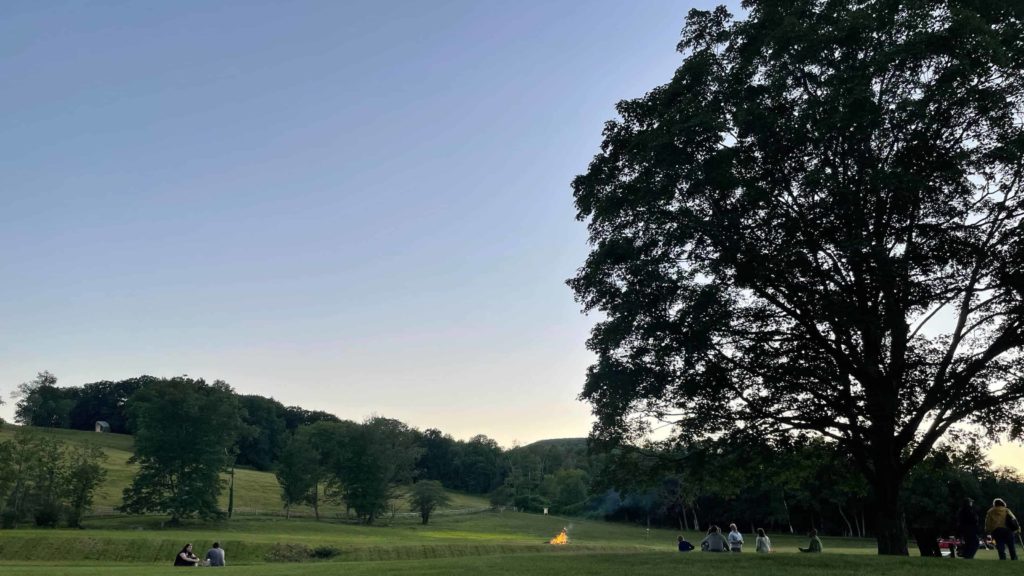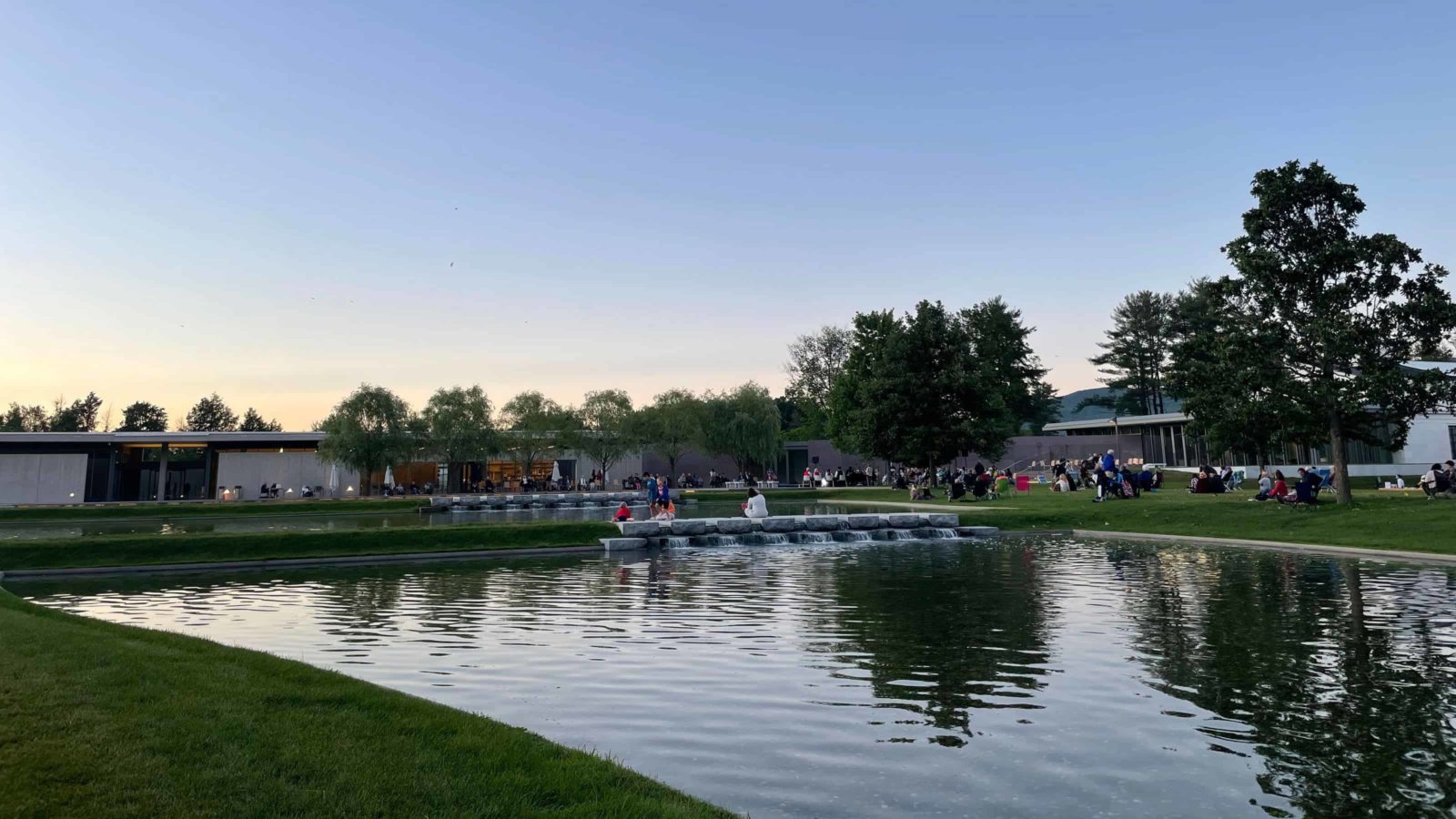The fire held my eye. It’s taller than the dancers, and it’s lighting this green knoll in the steep side of the hill. An old man is sitting on a glacial boulder, playing a Hardanger fiddle, and he’s holding it against his heart, not under his chin. I’ve seen an oldtime fiddler or two in New England hold an instrument like that.
Nikolai Astrup painted the steep valleys of Southwest Norway, the lake below his house, the fields where he and his wife planted cherry trees. But I didn’t expect midsummer bonfires. From a painter coming of age around 1900, I didn’t expect a ritual centuries old calling to earth and love and the growing season.
The dancers in the painting are moving close together in pairs — a man draws a woman back against his chest, their arms spread wide. I remember playing Swedish music by another northern lake, the accidental notes and lilting, shifting rhythms, and I’ve felt the pivoting spin of a schottische, your hands on your partner’s shoulders as you swing around him and he swings you around, flying on each other’s momentum.
That energy moves here in the firelight. The paint feels molten on the canvas, almost muscular, as though the flame has a body to coil. And then I see the shape of the dragon curled around the logs. He painted beings in these scenes. A mountain or a tree or a stalk of grain will turn and look and look at the moon or lie back and dream.
They are sentient and vigorous. They have their own passions and awareness and sense of the world. They aren’t human. But tonight, in the dusk, in the two-tone music of the fiddle, they and the dancers are in the same world together.

A bonfire lights Stone Hill on a midsummer night.

